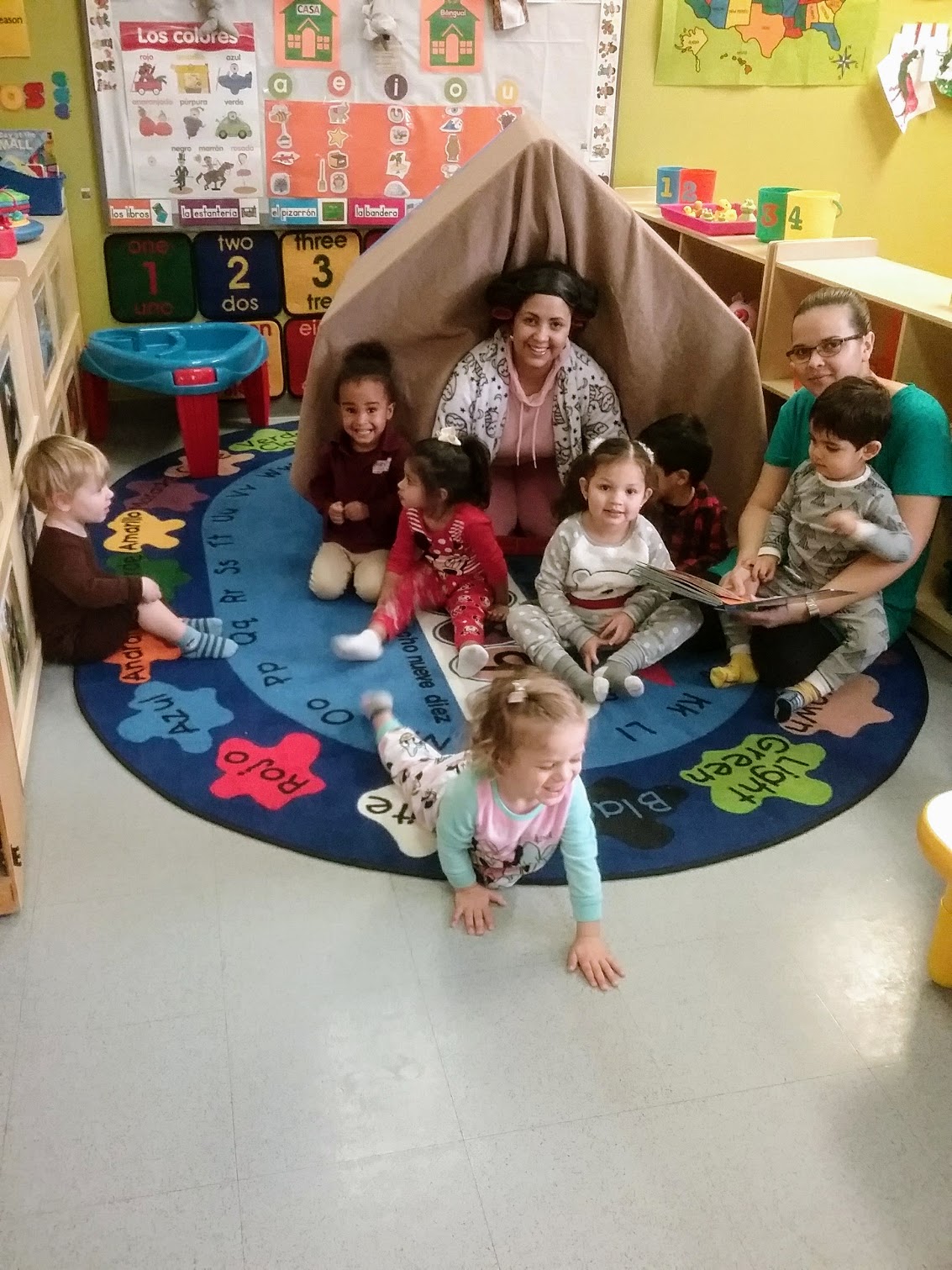NURSERY PROGRAM
“Science indicates that babies’ brains are the best learning machines ever created, and that infants’ learning is time-sensitive. Their brains will never be better at learning a second language than they are between 0 and 3 years of age.”
– PATRICIA KUHL, Univ of Washington Institute for Learning & Brain Sciences
Our Infant Program:
Red Ladybugs – Mariquitas Rojas
We accept infants starting at 3 months of age. Our infant classroom teaches Spanish and Chinese simply through interactions with their caregivers, which is the same way a child learns the language spoken by their parents.
Within our infant classroom, your child will receive a bountiful amount of love, nurturing and individual attention. S/he will interact with similar aged children and age-appropriate educational materials. Our infant curriculum uses infant specific lesson plans directed at achieving important motor, sensory, cognitive, language and social-emotional developmental milestones.
Our Infant Classroom is decorated using primary colors and preponderance use of colors red, black, and white, which research has determined to stimulate infants and enhance eyesight development. Classical music is played at appropriate times to enhance cognitive development.
A safe, loving home away from home. In this regard, we will:
• Provide your infant with his/her own individual crib along with crib sheets and blankets, which we launder regularly.
• Personalize care, meal and nap times to meet you and your child’s individual needs and preferences. For example, we can adjust to honor any already established sleeping and/or feeding schedule.
• Accommodate personal feeding preferences by accepting pumped breast milk or inviting you to come to the center anytime to breastfeed your child.
• Low 1:4 staff to child ratios up to 11month old.
• Low 1:5 staff to child ratios 12 – 17 month.
Our Toddler Program:
Orange Fish – Peces Naranjas
Children are eligible for our Toddler class around 18 months when they are steadily walking. Our Caterpillars participate in a wide variety of developmentally age appropriate activities to stimulate and foster their motor, sensory, language, cognitive, and social-emotional development.
Your child’s daily activities will include tabletop activities, circle time programs, music and movement, story reading, and interactive games, amongst other things, to reinforce your child’s acquisition of Spanish. Chinese immersion will be offered next year as part of the full day program.
Staff to child ratio is 1:7 for 18 – 23 months and 1:8 for 2 years old – 35 month old.
Nursery Program Questions
What Is The Infant Advantage?
Simultaneous Language Acquisition, The Science Behind the Gift
During the first six months of life, babies babble using the 70 tonal sounds that comprised all of humanity’s spoken languages. Babies are literally born into the world as Global Citizens. They will then learn to talk using only the tonal sounds they pick up from their environment, most importantly from their parents and caregivers. A baby’s brain will then discard the ability to speak in language tones s/he does not hear spoken by her caregivers. This window of opportunity is called a Critical Period for tonal acquisition. This is the reason to a Japanese Adult, “L” and “R’ sound the same, unless they attended Bilingual Whiz Kids as a young child
Our infant program leverages this important developmental period to build the human sound recognition needed for multiple language acquisition. By exposing our infant students to Spanish, Chinese and English, languages in the correct manner during the biologically correct time, we increase the list of tonal sounds the brain can easily process, spoken by native speakers during the caregiver to infant interaction. During infancy, multiple language acquisition is simultaneous, meaning neither language is learned first, rather English-Chinese-Spanish are learned simultaneously, and the infant brain was created at birth to do exactly that! Simultaneous language acquisition is a more natural process to achieve multilingualism and the Infant Program Advantage.


